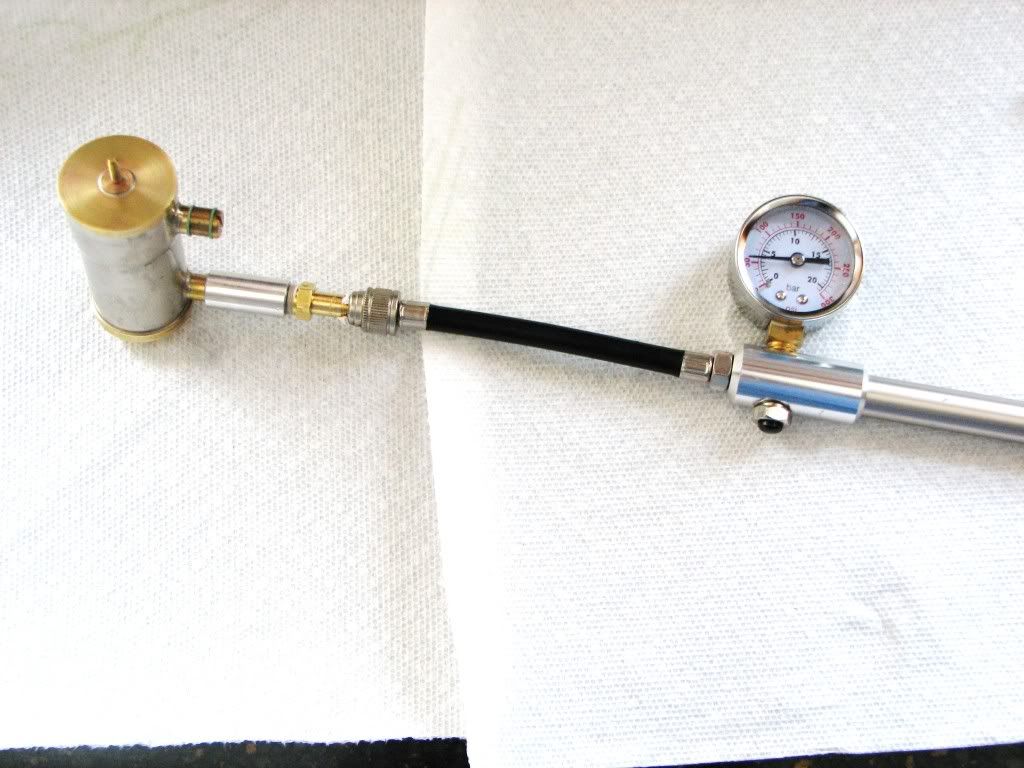zeeprogrammer
Well-Known Member
- Joined
- Mar 14, 2009
- Messages
- 3,362
- Reaction score
- 13
Guests went to bed early....
Newbie question alert! Newbie question alert!
So I made an adaptor to fit a valve stem to the boiler.
Just for fun, I attached it to the boiler, plugged things up, attached the pump, and pumped away.
I had no expectations this would work. And it didn't. Initially it wouldn't hold hardly anything. After tightening (by hand) the various joints, I could pump it to 50 psi but it would quickly leak out.
I understand I need to do this with water. And the leaks (I'm hoping) are just poor joints that should be fixable with a bit of pipe tape (teflon).
But I'm not quite sure I understand why water rather than air to test the boiler.
Certainly air is more compressible...but are there other considerations?
Having asked that...this is the mountain bike pump that was suggested earlier in the thread. If the boiler is sealed properly...what should I expect? Pump it to some pressure (e.g. 50 psi) and the gauge should sit at that? Or will the pump itself leak and the gauge is worthless for this purpose?
Thanks.
Newbie question alert! Newbie question alert!
So I made an adaptor to fit a valve stem to the boiler.
Just for fun, I attached it to the boiler, plugged things up, attached the pump, and pumped away.
I had no expectations this would work. And it didn't. Initially it wouldn't hold hardly anything. After tightening (by hand) the various joints, I could pump it to 50 psi but it would quickly leak out.
I understand I need to do this with water. And the leaks (I'm hoping) are just poor joints that should be fixable with a bit of pipe tape (teflon).
But I'm not quite sure I understand why water rather than air to test the boiler.
Certainly air is more compressible...but are there other considerations?
Having asked that...this is the mountain bike pump that was suggested earlier in the thread. If the boiler is sealed properly...what should I expect? Pump it to some pressure (e.g. 50 psi) and the gauge should sit at that? Or will the pump itself leak and the gauge is worthless for this purpose?
Thanks.





